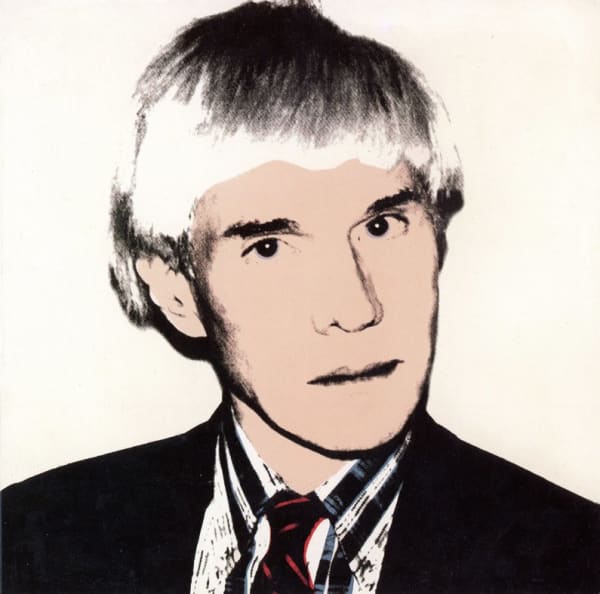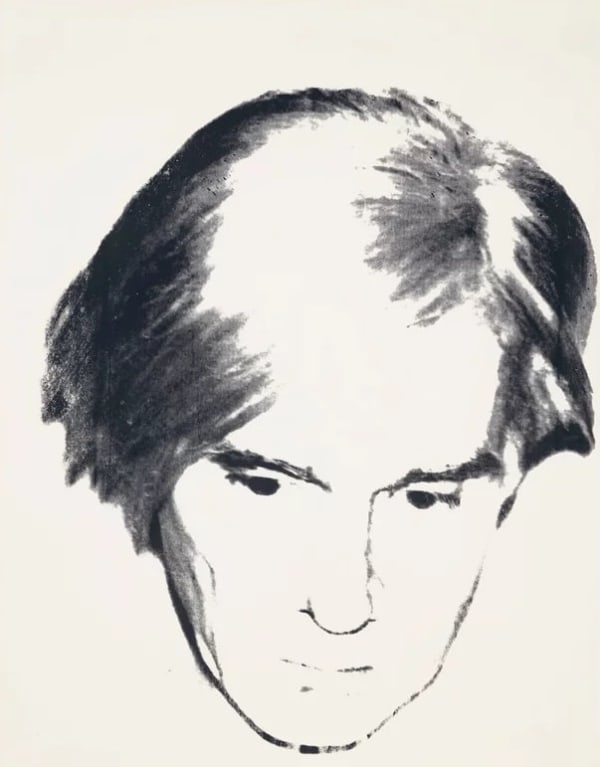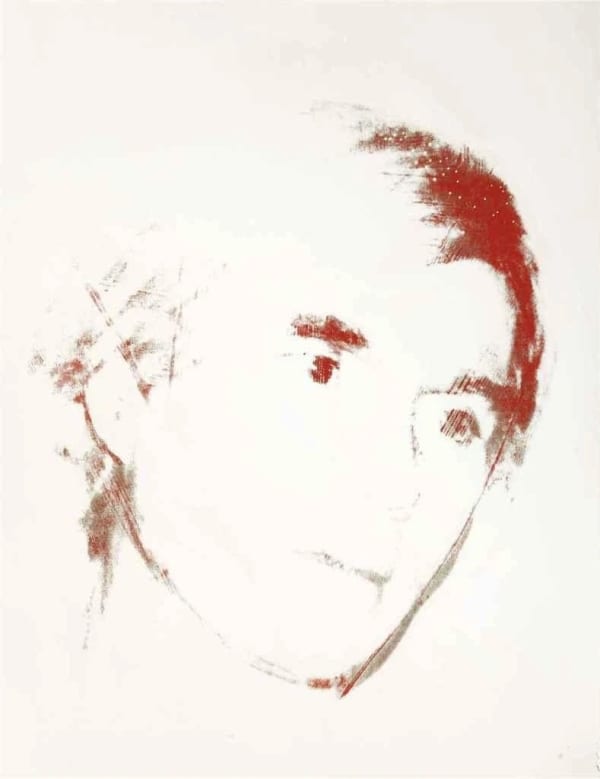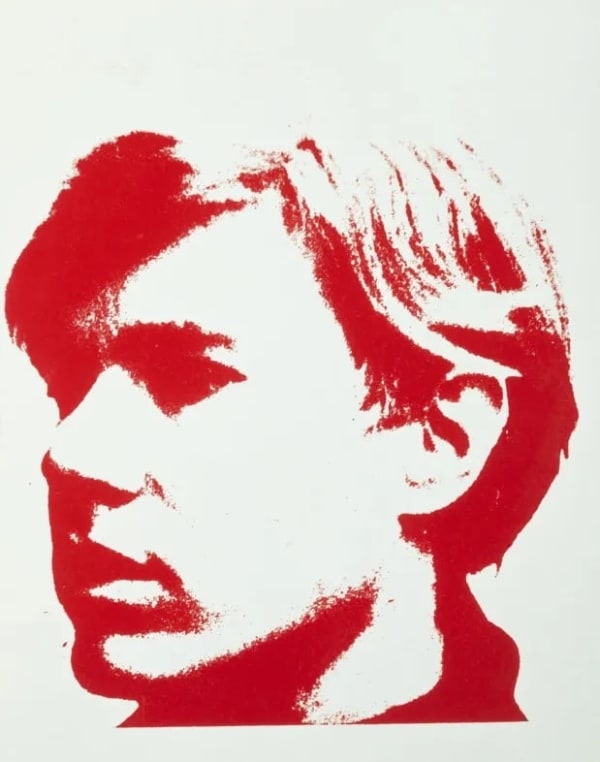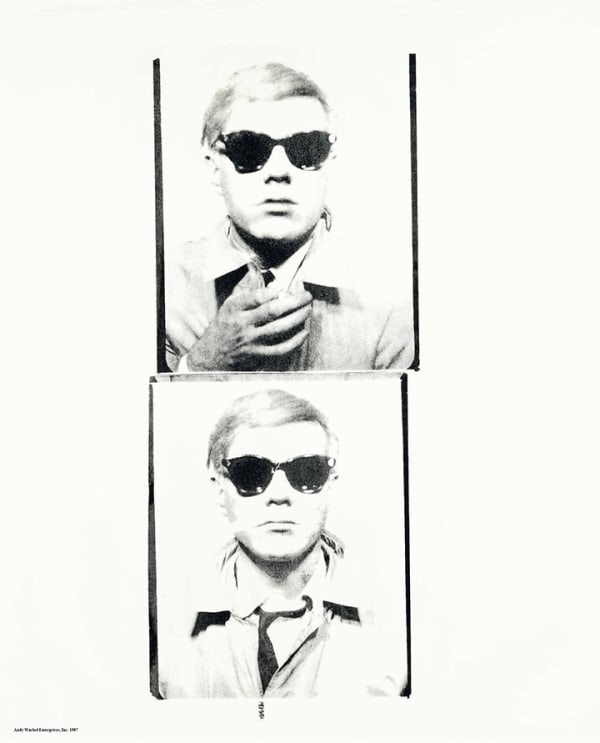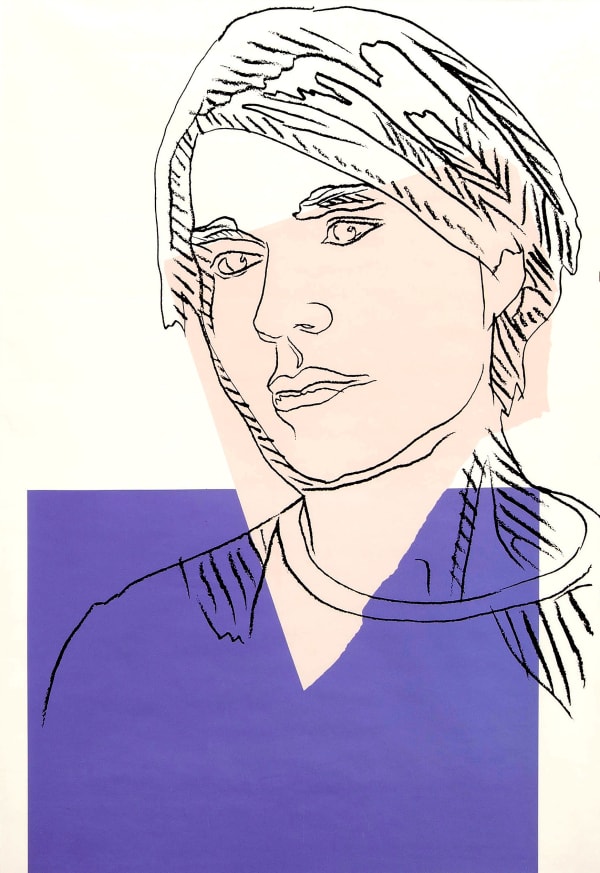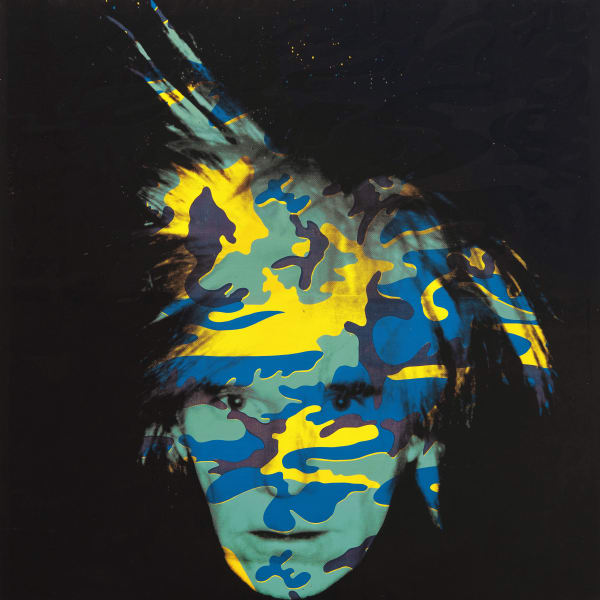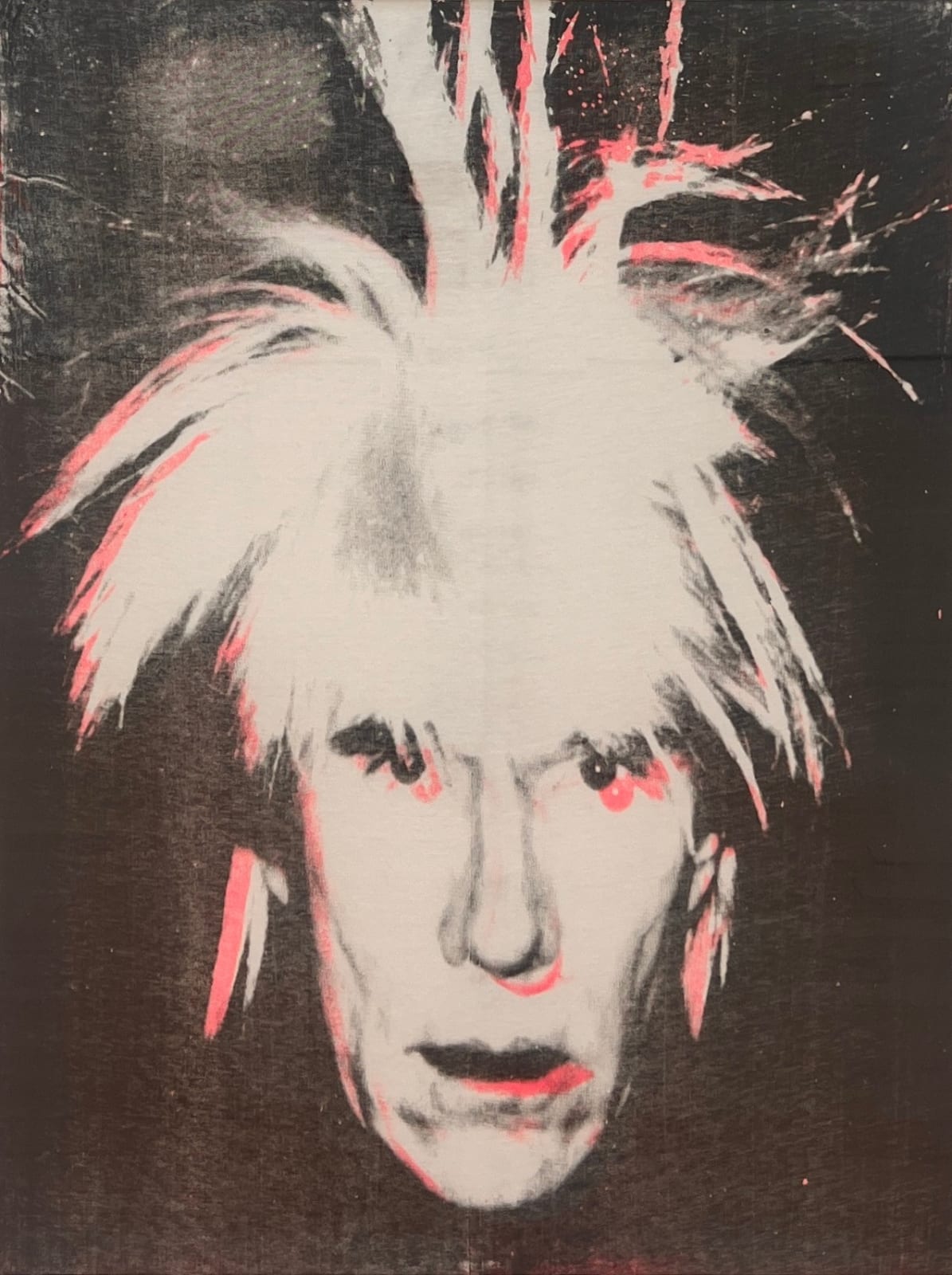
Andy Warhol
Fright Wig, ca . 1986
Screen print on cotton
32 1/2 x 40 3/4 in
82.5 x 103.5 cm
82.5 x 103.5 cm
Authenticated by the Andy Warhol Foundation For The Visual Arts with a unique identification number UP 97.11
Series: Self-Portraits
Copyright The Artist
Andy Warhol's Fright Wig series is a fascinating exploration of celebrity, identity, and the allure of pop culture. Created in the 1980s, this series exemplifies Warhol's iconic style and his...
Andy Warhol's Fright Wig series is a fascinating exploration of celebrity, identity, and the allure of pop culture. Created in the 1980s, this series exemplifies Warhol's iconic style and his fascination with the intersection of fame, consumerism, and mass media.
The Fright Wig series primarily features portraits of the legendary drag performer and singer, Liza Minnelli, adorned in various vibrant and exaggerated wigs. Warhol, known for his keen eye for capturing the essence of his subjects, depicts Minnelli with bold colors, dramatic contrasts, and a sense of theatricality that mirrors her larger-than-life persona.
The choice of Liza Minnelli as the subject of this series is significant. As the daughter of Hollywood icon Judy Garland, Minnelli herself became a symbol of fame, glamour, and the pressures of living under the spotlight. By immortalizing Minnelli in his artwork, Warhol not only pays homage to her talent and charisma but also delves into the complexities of celebrity culture and the construction of identity in the public eye.
The title Fright Wig adds an intriguing layer of interpretation to the series. Wigs, traditionally associated with performance and disguise, serve as a metaphor for the masks that individuals wear in the pursuit of fame and acceptance. The term fright suggests an element of fear or unease, hinting at the vulnerability that often lies beneath the glamorous façade of celebrity.
Warhol's use of repetition in the Fright Wig series further underscores the mass-produced nature of celebrity and the ubiquity of images in contemporary society. By creating multiple variations of Minnelli's portrait, Warhol highlights the commodification of fame and the relentless media scrutiny faced by public figures.
The Fright Wig series is not only a striking visual exploration of celebrity culture but also a reflection of Warhol's own fascination with fame and the allure of the iconic figures who populate the world of entertainment. Through his art, Warhol invites viewers to contemplate the nature of celebrity, the construction of identity, and the enduring appeal of pop culture icons like Liza Minnelli.
The Fright Wig series primarily features portraits of the legendary drag performer and singer, Liza Minnelli, adorned in various vibrant and exaggerated wigs. Warhol, known for his keen eye for capturing the essence of his subjects, depicts Minnelli with bold colors, dramatic contrasts, and a sense of theatricality that mirrors her larger-than-life persona.
The choice of Liza Minnelli as the subject of this series is significant. As the daughter of Hollywood icon Judy Garland, Minnelli herself became a symbol of fame, glamour, and the pressures of living under the spotlight. By immortalizing Minnelli in his artwork, Warhol not only pays homage to her talent and charisma but also delves into the complexities of celebrity culture and the construction of identity in the public eye.
The title Fright Wig adds an intriguing layer of interpretation to the series. Wigs, traditionally associated with performance and disguise, serve as a metaphor for the masks that individuals wear in the pursuit of fame and acceptance. The term fright suggests an element of fear or unease, hinting at the vulnerability that often lies beneath the glamorous façade of celebrity.
Warhol's use of repetition in the Fright Wig series further underscores the mass-produced nature of celebrity and the ubiquity of images in contemporary society. By creating multiple variations of Minnelli's portrait, Warhol highlights the commodification of fame and the relentless media scrutiny faced by public figures.
The Fright Wig series is not only a striking visual exploration of celebrity culture but also a reflection of Warhol's own fascination with fame and the allure of the iconic figures who populate the world of entertainment. Through his art, Warhol invites viewers to contemplate the nature of celebrity, the construction of identity, and the enduring appeal of pop culture icons like Liza Minnelli.
%3Cdiv%20class%3D%22artist%22%3EAndy%20Warhol%3C/div%3E%3Cdiv%20class%3D%22title_and_year%22%3E%3Cspan%20class%3D%22title_and_year_title%22%3EFright%20Wig%3C/span%3E%2C%20%3Cspan%20class%3D%22title_and_year_year%22%3Eca%20.%201986%3C/span%3E%3C/div%3E%3Cdiv%20class%3D%22medium%22%3EScreen%20print%20on%20cotton%3Cbr/%3E%0A%3C/div%3E%3Cdiv%20class%3D%22dimensions%22%3E32%201/2%20x%2040%203/4%20in%3Cbr/%3E%0A82.5%20x%20103.5%20cm%3C/div%3E%3Cdiv%20class%3D%22edition_details%22%3EAuthenticated%20by%20the%20Andy%20Warhol%20Foundation%20For%20The%20Visual%20Arts%20with%20a%20unique%20identification%20number%20UP%2097.11%3C/div%3E%3Cdiv%20class%3D%22series%22%3E%3Cspan%20class%3D%22artwork_caption_prefix%22%3ESeries%3A%3C/span%3E%20Self-Portraits%20%3C/div%3E
1
of
6
Related artworks
-
 Andy Warhol, Self-Portrait F.S. IIIC 59, 1977
Andy Warhol, Self-Portrait F.S. IIIC 59, 1977 -
 Andy Warhol, Self-Portrait F.S. IIIC 30, 1977
Andy Warhol, Self-Portrait F.S. IIIC 30, 1977 -
 Andy Warhol, Self-Portrait F.S. IIIC 29 , 1977
Andy Warhol, Self-Portrait F.S. IIIC 29 , 1977 -
 Andy Warhol, Self-Portrait F.S. IIIC 28 , 1977
Andy Warhol, Self-Portrait F.S. IIIC 28 , 1977 -
 Andy Warhol, Self-Portrait F.S. IIIC 27, 1977
Andy Warhol, Self-Portrait F.S. IIIC 27, 1977 -
 Andy Warhol, Self-Portrait F.S. IIIC 26 , 1977
Andy Warhol, Self-Portrait F.S. IIIC 26 , 1977 -
 Andy Warhol, Self Portrait F.S. IIIC 25, 1977
Andy Warhol, Self Portrait F.S. IIIC 25, 1977 -
 Andy Warhol, Self Portrait F.S. IIIC 24
Andy Warhol, Self Portrait F.S. IIIC 24 -
 Andy Warhol, Self-Portrait F.S. IIIC 1 (c), 1967
Andy Warhol, Self-Portrait F.S. IIIC 1 (c), 1967 -
 Andy Warhol, Self-Portrait F.S. IIIC 1, 1967
Andy Warhol, Self-Portrait F.S. IIIC 1, 1967 -
 Andy Warhol, Self-Portrait F.S. IIIA 10, 1978
Andy Warhol, Self-Portrait F.S. IIIA 10, 1978 -
 Andy Warhol, Self-Portrait F.S. II 156, 1978
Andy Warhol, Self-Portrait F.S. II 156, 1978 -
 Andy Warhol, Self-Portrait , 1986
Andy Warhol, Self-Portrait , 1986
